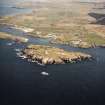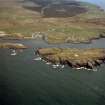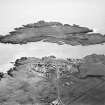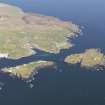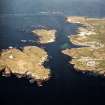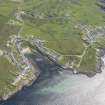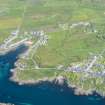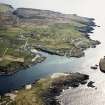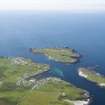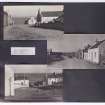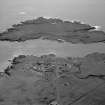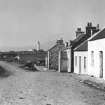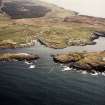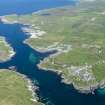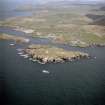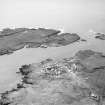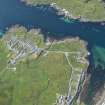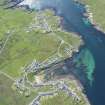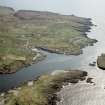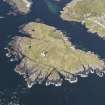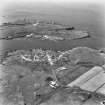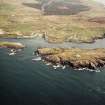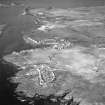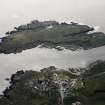Islay, Port Wemyss
Village (19th Century)
Site Name Islay, Port Wemyss
Classification Village (19th Century)
Alternative Name(s) Portnahaven; Straits Of Orsay
Canmore ID 37254
Site Number NR15SE 13
NGR NR 1691 5173
Datum OSGB36 - NGR
Permalink http://canmore.org.uk/site/37254
- Council Argyll And Bute
- Parish Kilchoman
- Former Region Strathclyde
- Former District Argyll And Bute
- Former County Argyll
Field Visit (August 1977)
NR 16 51. This small planned village is situated about 300m SE of Portnahaven and stands above the rocky foreshore on the Straits of Orsay. It is of an elongated D-shaped layout, and the existing pattern of streets and houses corresponds reasonably well with that shown on a feuing-plan of the lands of Wemysshaven' drawn in 1833, probably soon after the foundation of the village by Walter Frederick Campbell of Islay.(Islay Estate Papers, SRO, RHP 11, 018; Storrie 1981; New Statistical Account 1845, Highland Churches 6th Report) The settlement was named after his wife's father, Francis, 8th Earl of Wemyss and March.
The domestic buildings are grouped mainly around the inner perimeter of the village lanes, fronting the surrounding areas of garden ground. The lots or pendicles were originally laid out in regular strips to the N and E of the village, and there is a jetty and boat-anchorage to the W. In their existing form, the houses are variously of one, If or two storeys in height, but, apart from a group facing the main street, the majority appear to have been single-storeyed in origin. The least-altered examples have plain three-bay frontages of limewashed or harled rubble masonry, and have gable-ended and slated roofs. A derelict specimen at the NW end of Shore Street measures 9.5m by 6.2m over lime-mortared walls 0.6m thick. The windows have through splays from sharp external arrises while those of some occupied buildings have offset margins wrought with stopped chamfers. There are fireplaces in the end-walls, and the ground-floor interior probably had a simple tripartite division of apartments incorporating a central closet. The tall wall-head was designed to accommodate a loft within the roof-space.
RCAHMS 1984, visited August 1977.












































